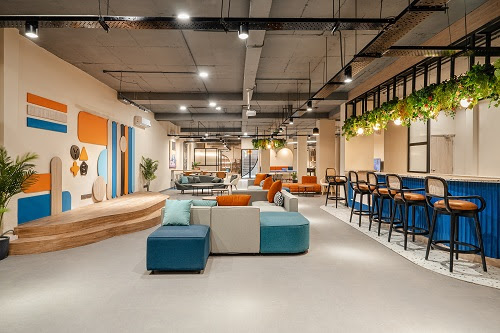Authored By Ved Parkash Dudeja, Vice Chairman – Rail Land Development Authority
While India and the global economy continues to grapple with the health and economic repercussions of the COVID-19 pandemic, the logistics and warehousing segment has emerged as a promising avenue in real estate. The COVID-19 period has witnessed the logistics and warehousing sector stepping in to fulfil customers’ needs despite the nationwide lockdown, giving a clear indication of its resilience and potential. The segment has rebounded quickly from the pandemic to around 75% normalcy and is expected to return to pre-COVID levels in the next few months.
Despite the apparent bleak economic scenario, a series of government initiatives in the logistics and warehousing sector taken in the past few years have laid the roadmap for growth. The improvement in ‘Ease of Doing Business Index’ along with the proposed National Logistics Policy and National E-commerce Policy is expected to give a thrust to the sector. Additionally, the completion of the Bharatmala project as well as the commissioning of multi-modal terminals at Sahibganj and Haldia will generate direct and indirect employment and aid in reducing costs. According to a CBRE report, 2019 witnessed a record high of leasing activity of 33 million sq. ft., a growth rate of 30% YoY. The fundamentals of the sector remain strong and should lead to the recovery of the sector in the latter part of 2020.
One of the major trends witnessed in the post-COVID-19 scenario is the emergence of Tier 2 and 3 cities as sunrise hubs of logistics and warehousing. Cities like Ludhiana, Coimbatore, Vapi, Guwahati, Bhubaneshwar, Surat, Lucknow, Patna, Siliguri and Ambala- Rajpura belt are already witnessing higher warehousing demand.
The disruption of global supply chains in the wake of COVID-19 has prompted firms to recalibrate their expansion strategy and decentralize operations to shield themselves from exigencies. This trend is anticipated to continue with improving demand and rise in manufacturing to benefit cities such as Coimbatore, Indore, Kochi, Jaipur, Lucknow, Kanpur, etc. which have witnessed a growth rate of 20 percent in warehousing in FY-2020, as indicated in a Knight Frank report, Obvious advantages in terms of low rentals, availability of manpower at a reduced cost, low cannibalization potential and high vacancy levels are driving this growth. A beginning has already been made by respective state governments to streamline the logistics segment. For instance, Assam has launched its new export and logistics policy with a provision of capital investment subsidy up to 30% subject to a ceiling of Rs.10 crore for the creation of logistics infrastructure. The Tamil Nadu government has put in place the facility of customized incentive packages to woo investors.
The demand for faster and seamless delivery of goods via e-commerce will also lead to the emergence of the concept of micro-warehousing. This implies the establishing of warehouses closer to, or even within, cities rather than in far-flung areas or outskirts. A CBRE report foresees third party logistics (3PL) firms, e-commerce along with retail and corporate to drive the industrial demand. Growing demand for cold storage by e-grocery firms and the need for dark kitchens will further augment capacity in logistics and warehousing. Datacentres will be the new addition to the logistics portfolio with several global firms vying to ramp up their capacity in India. Amidst rental arbitrage and demand for quality space, the built-to-suit model will become the new normal. This will, in turn, escalate the rental values and give a fillip to investment due to high and assured returns. Investors are likely to consider industrial assets as an addition to their REIT portfolio. With consumers re-evaluating their preferences from a realistic angle, developers will diversify the offerings portfolio and generate new revenue streams such as pre-quality checks, procurement solutions and much more.
As internet penetration continues to grow along with online media content and start-up ecosystem, emerging technologies such as building information systems, sensors, etc. will be a key enabler to maintain supply-chain and cost efficiencies. While hygiene and wellness measures take centre stage, developers will increasingly rely on facility management services in warehousing to gain consumers’ confidence.
The interplay of policy reforms, evolving start-up ecosystem and a consequent shift in consumer behaviour towards digital technologies indicate a bright future ahead for the logistics and warehousing sector.


















